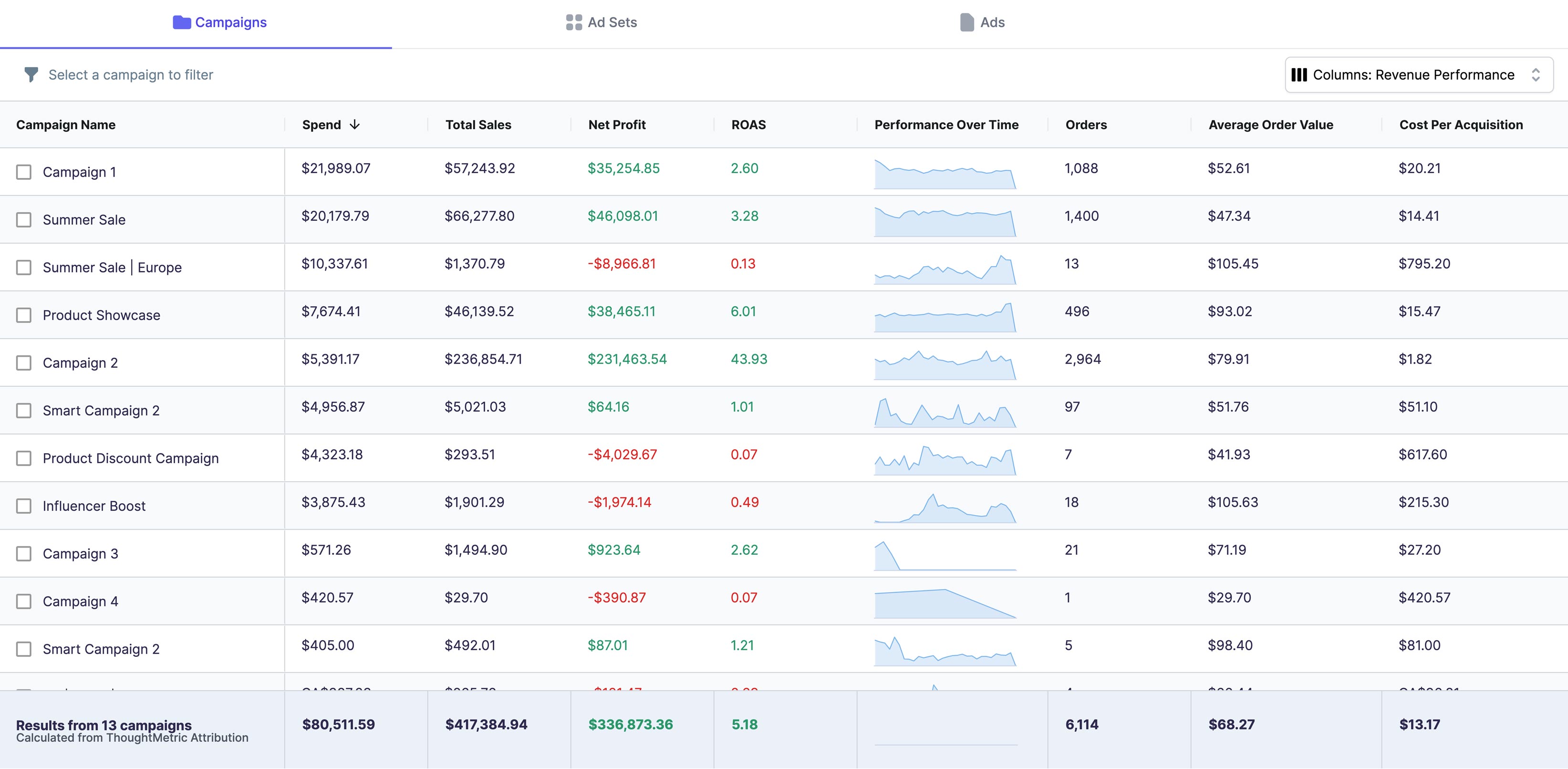Multi-Touch vs. Last-Touch Attribution: What’s the Difference?
- Last-Touch Attribution gives 100% of the credit to the final channel a customer interacted with before purchasing. The last touch model will provide all the credit for any order to the last touchpoint in a conversion path. The last touch model is a great way of looking at your bottom of the funnel conversions. This model gives you a clear look into which marketing touchpoints are the final piece of the puzzle to getting your customers to make a purchase.
- Multi-Touch Attribution is designed with the e-commerce customer journey in mind to get you the most accurate and reliable understanding of how many orders are really coming from your various marketing platforms. Facebook will overreport their performance by taking too much credit for sales. For example if a customer clicked on a Facebook ad on Monday, then clicked on a Google Ad on Tuesday, then made a $100 purchase on Friday, Facebook will claim full credit for this sale and report $100 in revenue, completely ignoring the fact that the customer also clicked on Google Ads. Likewise, Google Ads will also report $100 in revenue. So you have two ad channels reporting a total of $200 in revenue when you really only had one sale for $100. This is why we recommend our multi-touch attribution model. ThoughtMetric knows that the customer clicked on both Facebook ads and Google ads and will split up the credit for the sale between those two sources.
Key Takeaways
Why This Matters for Your Brand
Ready to see how multi-touch attribution could change the way you measure performance? Book a demo and get a clearer view of your marketing impact.

.png)



.png)